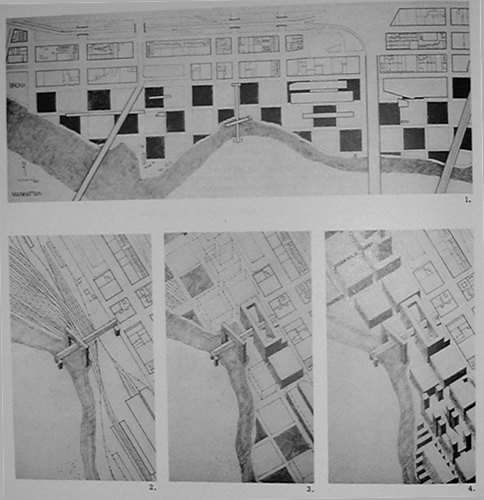
Transparent
Structures
Before
we investigate why it happens, it is useful to reflect just how unusual
the phenomenon of a clear authorial presence is. When reading Moby Dick,
surely no one would say that they see Melville at his desk, writing the
novel. Any such visualization would be pure speculation, without any basis
in the text. Similarly, Dickens always stays behind the scenes in his
novels. In general, authors are mysterious figures. Calvino is not.
A primary reason Calvino’s works differ so markedly from other writer’s
in this respect is the transparency of their structure. His every work
contains a blueprint for its own creation, and thus it is much easier
to see Calvino’s writing process.
In Invisible Cities the blueprint is a strict mathematical pattern, placing
each city into one of eleven thematic categories, and one of nine chapters.
These links tie each entry into a larger and more cohesive framework.
Once Calvino has created this frame for himself, his job is simply to
fill in the details, writing a page or two for each space in the pattern.
The Castle of Crossed Destinies has a similar geometric
organization. In fact, in this book the process of creation is even
more explicit, as it is a process that every character in the book attempts
at one point or another. All the characters lay out a series of tarot
cards, and the other characters try to interpret the cards as a narrative.
Calvino, as one of these observers, has again reduced his role to filling
in the blanks, fleshing out the relationships and details suggested by
the framework of cards.
If on a Winter’s Night a Traveler initially seems to be a work of
a different sort. Surely, the partial novels that make up the majority
of the work are all interrupted beginnings, but besides this fact there
are few obvious similarities between all the different pieces of this
fragmented work. The final chapter reveals this sense of randomness to
be an illusion. Here, in one of the most famous paragraphs in all of Calvino’s
work, the blueprint is finally revealed, as all the titles of the partial
novels fit into a single coherent sentence. Calvino appears again in the
mind of the reader, a pair of scissors in his hand, cutting a sentence
into pieces, and filling in each phrase with the beginnings of a novel.
The structure is now apparent, and Calvino is simply filling in the blanks.
These structures do not simply demonstrate, as Calvino says, a “fondness
for geometrical forms, for symmetries, for numerical series, for all that
is combinatory, for numerical proportions.”[1] These models comprise
the essential form of Calvino’s novels. They are the essence of
the books’ conceptions, and comprise the theoretical rough drafts.
No other author lays so bare the details of the process of writing, putting
so little distance between reading and the pure act
of creation.
In all his works Calvino is far from an invisible author. He is not only
present, but also producing in full view of the audience: creating a larger
structure that contains the outlines of the novel, and then simply fleshing
out each separate piece.
img: Proposal for a Bridge at the South Bronx Railroad Yards, Steven Holl, Pamphlet Architecture #1